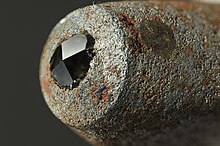BonzaiDuck
Lifer
- Jun 30, 2004
- 15,725
- 1,455
- 126
I have no data to back it up but I remember reading that diamond paste is definitely a no-go for bare-die applications because of their etching tendency. I'm sure you're aware of this but I just wanted to bring it back up. It's risky.
It could be risky if you spread it on the die. Or it would be riskier if you spread it on the die. But if you spread it thinly on the CPU side of the IHS and add another silicon-grease to lubricate it, the risk should be considerably less. Especially less, I'd think, if you assure that some or all pressure from HSF spring-loaded assembly is on the IHS, which means attempting to keep the black adhesive intact. I'm trying to figure out how best to make the Pit Crew useful in this endeavor -- point being, later removal of the IHS would require the same razor-blade trick if "adhesion" to stabilize the pressure or provide support along the IHS edge is desired/re-established.





